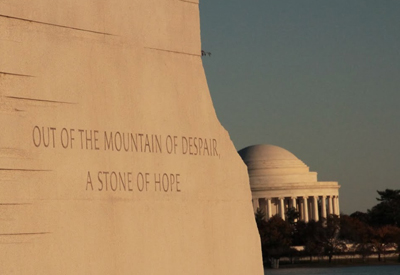by Aaron Butts
Dr. Brian Wallace’s Holocaust and Genocide class took a recent trip to Washington D.C. to visit the United States Holocaust Memorial Museum and much more. Although the point of the trip was to see the United States Holocaust Memorial Museum, they also got to see all that Washington had to offer.
“We went to the Capitol, Arlington Cemetery, and the tomb of the unknown soldier,” Abbie Carver, senior, said.
Kehl and Carver are just two of many students who are taking a class on genocide this semester with Wallace, but Kehl emphasized that the trip would have been beneficial to anyone.
“It’s something that you should learn about,” Kehl said. “It’s not something specific to someone studying in the humanities, but rather everyone because it’s really important. “
Wallace’s class focuses on a few different events in modern history revolving around the topic of genocide. The class sets out to explore what it is that drives humans to commit such atrocities, along with what can be done to prevent them in the future. A very large portion of the course is focused on the Holocaust, which is perhaps the most infamous example of genocide when over 11 million people died over the course of a decade.
“The museum had a lot of artifacts from the Holocaust,” Kehl said. “It was a textbook of a building with everything in chronological order.” At the end of the tour, they showed videos of survivors recounting their experiences. “I cried when I was watching those videos,” Kehl said.
While the Holocaust is an important time in human history to focus on and remember, the students also took time to recognize the genocide that had taken place a little closer to home.
“We went to the Museum of the American Indian,” Kehl said, who said that the class takes a perspective on numerous different examples of genocide including that of the Native Americans. Carver pointed out that there was also a lot to see going on under their noses.
“On the way there we went through the metro and saw so many homeless people that are suffering, while on our way to a museum that was immortalizing another kind of suffering,” Carver said.
The trip had planned to make stops at Harper’s Ferry Virginia and the Antietam Battlefield, both locations of incredible significance during the Civil War; however, the amount of time students invested in exploring D.C. left them very little time to see much else.
“We didn’t go there, which I was fine with because it gave us more time in D.C.,” Kehl said.
Carver explained that the reason they needed so much time in D.C. was because there was so much to get through.
“We spent two days going through it,” Carver said. “We only spent a few hours each day because if you spend too long there you get desensitized, which is scary.”
Both Carver and Kehl emphasized that everyone should visit the museums at some point, and that Capital students who don’t get out very often should take hold of future opportunities such as this one.
“Any chance to travel, you should take it,” Carver said.
abutts@capital.edu

